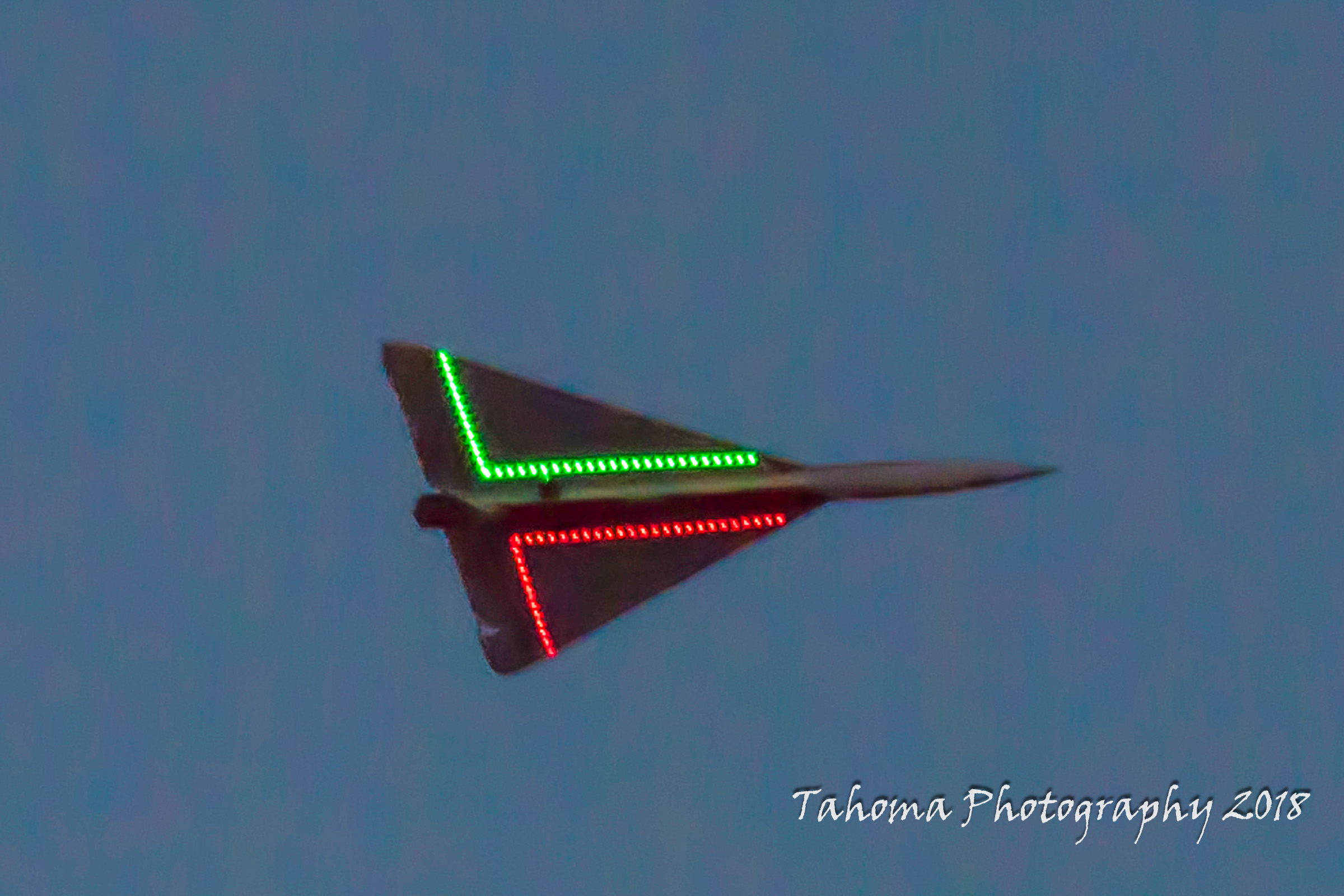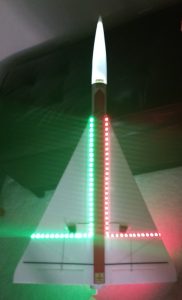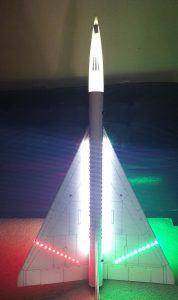Here is some video from my Aurora Clipper kit modified with lighting.
The parts to do your own version are:
Small gauge wire to make the jumpers to solder to the strips and connect + and – terminals from all the strips to each other. The strips can be connected from any set of pads since they are in parallel.
Red jst connector to fit the battery.
Lights
https://www.ebay.com/itm/LED-Strip-L…72.m2749.l2649
LED Strip Light SMD 3528 Flexible Tape 300led DC12V indoor outdoor lighting rope 5 meter length
Battery, use any small 3s lipo battery, at this time, hobby king, hyperion, turnigy make or carry a 180mah 3s lipo that is 19-20 grams and is perfect.
Plan battery size, count your diodes, current draw is 1 amp per 150 diodes(what I used), so with a 180mah battery using about 80 % of capacity to be safe would give 8 minutes, plenty long for pad wait, flight plus recovery. You leave your current component placement and receiver battery as is and simply place this new battery and connector/hatch at the CG of the rocket glider so you can fly with or without the lights and nothing changes, it’s simple but adds weight. Lights add about 3/4 ounce(20 grams), bec/esc add around 10 grams, and battery is around 5-10 grams heavier, around 1.5 ounces heavier.
In my Aurora Clipper kit, I decided to optimize component placement to minimize added weight, so I mounted the receiver back inside the fuse near the servos via a small cutout in the bottom of the wing/body tube, then added a small esc with bec or a straight lightweight bec to convert the 3s battery to 5v into the rx and run the battery wire forward into the nose where the heavier 3s battery is mounted with velcro. The end that connects to the battery has a jst plug and also branches off with another wire and goes directly to the led’s in the nose which run back to the lights in the wing as well. In this configuration it required no balast and rtf with single use motor is 11.75 oz, slightly less than an ounce heavier than a normal model.
I used white lights along the fuse to highlight the top and vertical stab to help orientation and angled the red/green port/starboard wings, while I left the bottom just L shaped colors. I then used clear packing tape over the lights to protect them and hold them down.
For night flying, more is not necessarily better, you can blow out your night vision. I found flying just after sundown allowed me to see the lights very well but still see the ground for landing.
Here she is in flight, photo courtesy of Jim Wilkerson.

- bottom view showing just colored sections.
- Top view showing white lights and angled colors

